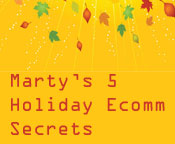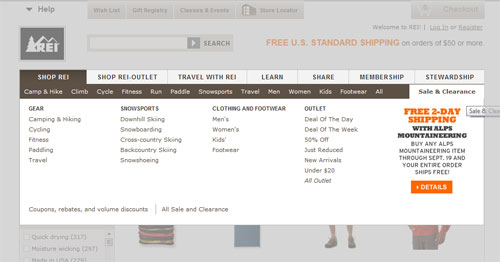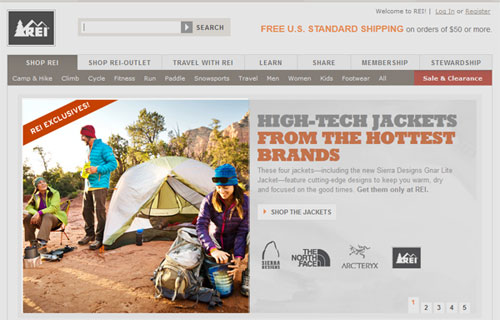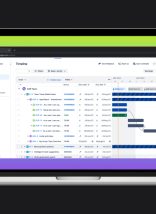
Holiday Ecomm Secret #1: Focus
Testing and experimentation help ecommerce teams understand what works and why. ABT stands for “Always Be Testing” and you should test, test and test more. We would never say don’t test, but testing during the holiday window, a window that may start with Back-To-School in September for some websites, should be limited to testing things that are immediately beneficial.
Testing button color, headline placement and copy length during the holiday selling season is not a good idea. Testing in the fall, especially the early fall, should focus on offers. If you find your Free Shipping trigger works better at $75 than $55, that is valuable information. Be sure you define “works better” clearly with multiple dimensions such as AOV (Average Order Value), Conversion Rate (for the site and key pages such as your sale page), Dollars Per Visitor, New To File (people who purchased for the first time), traffic source, Lifetime Value (LTV) and transactions over impressions (traffic). Don’t forget the most important metric – Dollars To The Bank.
You may also want to reduce your testing to 50% from your summer testing schedule. You and your team have other fish to fry in 4Q. Continue to test, but test things that can make a difference THIS holiday season, such as offers and merchandising combinations. Leave global improvement UX (User Experience) testing until next year.
Holiday Ecomm Secret #2 – Segmented Sale Page
Don’t dump a hundred items in your sale page and ask your customers to figure it out. Create some organization that makes sense for your site. Examples of good sale page segmentation include:
- For Him, For Her, For kids.
- Buzz Team Recommends (your team of reviewers).
- Best or Top Sellers By Category (whatever categories you use).
- Best Selling Combinations (people who bought X also bought Y and Z).
- Highest Reviewed (if your Ecomm site doesn’t have reviews, GET THEM).
- Fastest Sellers or HOT products (trending cultural products are important to highlight).
- Most Press – If you have products in O Magazine or Redbook, promote that.
- Guest Curators’ Picks – Celebrities or category expert picks can work well and create PR.
- Staff Picks – Your staff are experts too, so create a sale section with their picks.
- Social Media Curation – Most Pinned, Most Retweeted, Most Mentioned.
Don’t do ALL of these segmentations at once! Segmenting your sale page is a good thing to test in the summer. We wouldn’t suggest testing your sale page during the holiday selling window, because there are too many moving parts. By September you should know what segmentations work best for your site and sale page.

If you DON’T know your site’s best sale page segmentations, then go with your categories, generic values like Best Sellers or Best Reviewed or For Him, Her and Kids. Put “test segmented sale page” on your testing calendar for next year. Testing will probably show that standard segments work best, but how your customers respond to different segments is a good thing to learn from testing.
REI’s Sale area is segmented by: Gear, Snow Sports, Clothing and Footwear and Outlet.
We found a cool new segmentation on CB2.com – “Most Pinned”. Most Pinned is great social marketing segmentation. You could also do Most Retweeted or Most Discussed.

.
.
.
.
.
Holiday Ecomm Secret #3 – Seasonal Hero Images
The largest picture on a webpage is also known as “the hero”. The hero is an important touchstone for visitors. Hero images create a sense of style unique to the site, reinforce key value messages and create connection to the time of year. If your site is shopped by people from California to Maine, creating a single fall hero can be a challenge since fall is different in New England than it is on the west coast.
If your site can be programmed to read the incoming cookie and visitor location and then supply a related image, you can create different hero images for different areas of the country. If your site is not that sophisticated and you have an image roll, a hero that changes every few seconds, be sure to include different fall looks in your roll.
If you don’t have any of those options, find an image that communicates the values of fall without being too specific to place or time. REI does a great job of using hero images to communicate a sense of generic place and time. Their hero images show people in warm gear in the mountains. It isn’t clear if the mountains pictured are California, Colorado or Maine.
REI Seasonal Hero Example:
Holiday Ecomm Secret #4 – People in Hero
What do humans like to look at more than anything else? If you answered “other humans,” you win a cookie. Here is a quote from Perceptual Science and Technology at Rutgers:
As inherently social animals, humans most accurately perceive and
interpret the movements of other people.
Intuitively, we know the truth of our “people watching” obsession. Why then do we put THINGS, not people, into our website heroes? Heroes are the largest pictures on a web page, and they should include people.
A recent analysis of an Apple iPad ad proved the point. Apple’s 32 second includes 30 people, or almost a person a second. Some people are in the background, but our brains register more than we “see”. Apple understands the importance of people watching in their ads.
Line of Sight
When people look at your website, their eyes go immediately to the upper right, then they follow the line of sight of people pictured in images on your site. Have people pictured in your hero look directly out at your visitors to increase engagement. Have people in your images look at Call-To-Actions (CTA) to increase conversion.
BassPro Example Of Line of Sight
Great example of the power of people in a hero from BassPro.com. We would prefer a larger Call-To-Action of a more contrasting color, but your eyes can’t help but look where the archer is aiming (right at the boot LOL).

Holiday Ecomm Secret #5 – Simple, Quiet and SALE
We can debate the Chinese finger puzzle e-commerce merchants find themselves in later. The “constant sale” syndrome is a pain, but it is the reality of 4Q Ecommerce. To NOT have a significant sale during the holiday season will drive traffic to your competitors. This is NOT to say that you can’t make a value argument, just make sure your value argument is in combination with an amazing sale. Here are a few ways to create an amazing sale:
- More items on sale than your competitors.
- More items on sale than last year (record number is a great claim).
- Cooler and hotter items on sale than competitors.
- Deeper discounts on popular items than competitors.
- Unique merchandising combinations your competitors don’t have
The last point is a favorite tactic. Combining items in unique ways creates a new SKU (Stock Keeping Unit) that will be uniquely yours until competitors catch up (and they may not care to chase your site). Customers visiting shopping comparison engines are unlikely to find any competitor exactly matching your unique merchandising. Give your unique combinations cool names and create them faster than your competitors can copy, and you will stay ahead in the SERPs (Seerch Engine Result Pages).
The fall is a great time for Occam’s Razor. If you KNOW what is going to work because you’ve tested all summer, reduce your offers. Since every ecommerce site is SCREAMING at this time of year, it is a great time to narrowcast. Create a story you can tell over 4 months, a story that gets faster and faster the more you tell it and the closer 12.25 becomes. We are taking our own advice. By making September Ecommerce Secrets Month, we are developing a timely idea that can go into our content bag for next year.
We could discuss social, shopping carts and email marketing, since that content would prove helpful, but the impact of great content without an umbrella to organize it can be overwhelming. If this weekend is one sale, and next weekend a different sale, and the following weekend a third, you will burn out your list, increase unsubscribes and lower conversion.
Here is a favorite ecommerce merchandising irony: Take exactly the approach described above as part of an articulated plan shared with your customers, and conversions increase and your list stays healthy. Sharing your merchandising WHYs with your customers is powerful magic. Your customers get it, they have a way to describe what is happening, and so they don’t feel spammed.
ANY STORY WORKS better than no story. You can create a sale based on:
- The 12 days of Christmas
- Customer requests
- Dr. Seuss.
The story behind your merchandising events is important, but not as important as HAVING A STORY, sharing the story and responding to feedback about the story. If someone says negative things about your use of the Cat in the Hat, be appreciative for the feedback and continue on. If an army of people (or lawyers) takes issue with your Cat in the Hat promotion, find a new story (lol).
The last line is important enough to comment further. NEVER get so married to your merchandising plan that you continue a bad one. The beautiful thing about Internet marketing is your team should be able to change directions if your first direction is losing money.
I rarely created a Plan B option, but there were 2 holiday selling seasons out of 7 during my tenure as Director of Ecommerce I wished we had. Junking a merchandising calendar after Halloween is stressful and risky, so it’s something you should only do if the early returns are poor beyond question (they rarely are, btw). When you have millions riding on something, creating a Plan B you hope you will NEVER be used is a good idea.







